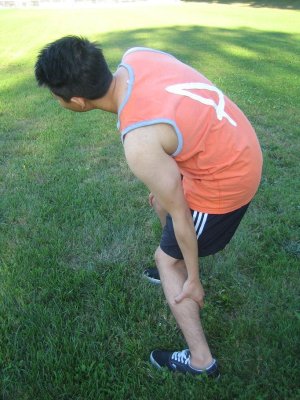
Varicose veins (varicosities) are abnormally dilated, convoluted and superficial veins that appears visibly on the lower extremities which are primarily caused by incompetent venous valves. Most commonly, this condition occurs in the lower extremities and the lower trunk but can occur elsewhere in the body such as in the esophagus.
Varicose veins are more common in women and in people whose occupation requires prolonged standing such as salespeople, security guards, teachers, nurses and construction workers. Recent studies have shown that there are certain individuals who are more prone to acquiring varicosities who have family members known to have experienced the same condition. A hereditary weakness if the vein wall contributes to the development of varicose veins. Pregnancy is also a predisposing factor because the hormones during pregnancy affects the distendibility of the veins, increases blood volume and pressure of the gravid uterus.
Pathophysiology of varicose veins
Varicose veins may be considered a primary (without the involvement of deep veins), or can be secondary (resulting from obstruction of the deep veins in the lower extremities). A reflux or a back flow of venous blood in the veins can result in venous stasis wherein the blood pools within the susceptible region which in turn swells up the veins leading to a more superficial appearance. If the superficial veins become affected, a person can have no presenting symptoms but may see it as an aesthetic problem due to the troublesome appearance it causes.
Clinical manifestations of varicose veins
The presenting symptoms of varicose veins, if at all present, may include dull aches, muscle cramps, increased incidence of muscle fatigue in the lower extremities, edema of the ankle and intermittent feeling of heaviness of the legs. Individuals suffering varicosities may also experience nocturnal cramps (cramps occurring more often during night time). When deep venous obstruction results in distended deep veins, the individual may also develop signs and symptoms of chronic venous insufficiency, ulceration, edema, pain and pigmentation which further increases the individual to the susceptibility of infection.
Prevention and management of varicose veins
In preventing the onset of varicose veins, individuals who are at high risk of acquiring this condition should avoid activities that causes venous stasis such as wearing constrictive girdles or socks that are too tight which can leave a mark on the skin, crossing the legs at the thighs and standing or sitting for prolonged periods. High risk individuals are advised to change position frequently, elevating the legs when they are tired and avoiding a sedentary lifestyle. The individual is encouraged to brisk walk at least 1-2 miles a at least three times a week to promote good circulation and venous return if not contraindicated. Analgesics are prescribed to assist the individual move around when there is pain. If the patient opted to undergo a surgical procedure (ligation and stripping) for the treatment of distended deep veins, proper wound dressing must be emphasized to prevent infection of the surgically treated varicose veins.
Excerpt
Varicose veins are basically a normal occurrence as people age.
However, there are certain individuals who are more prone to acquiring this condition due to heredity, occupation and sedentary living. Although there are surgical treatment options for varicosities, prevention is still the best choice. Exercise, keeping proper posture and frequent rest periods is the key in avoiding the early onset of varicose veins.
